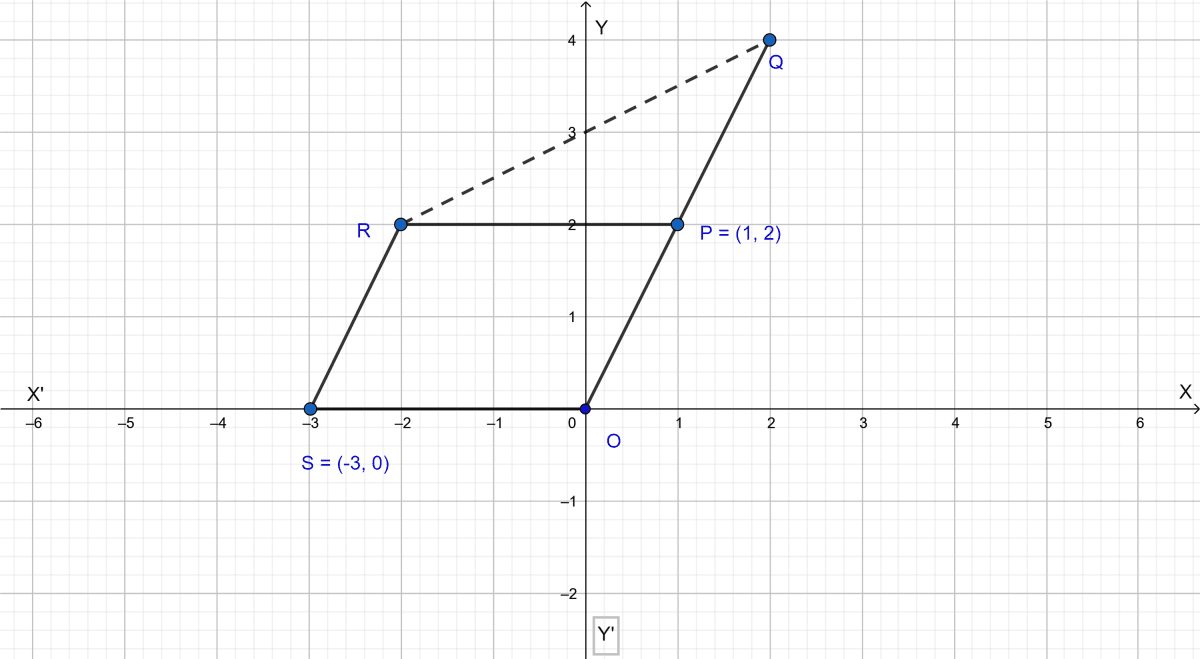Mathematics
Given O (0, 0), P(1, 2), S(-3, 0). P divides OQ in the ratio 2 : 3 and OPRS is a parallelogram.

Find :
(i) the coordinates of Q.
(ii) the coordinates of R.
(iii) the ratio in which RQ is divided by the x-axis.
Section Formula
64 Likes
Answer
(i) Let coordinates of Q be (a, b).
Given, point P(1, 2) divides OQ in the ratio of 2 : 3. Here, O(0, 0) is the origin.
By section formula we get x,
x-coordinate =
By section formula we get y,
y-coordinate =
Hence, coordinates of Q are .
(ii) In OPRS, OR and PS are diagonals. Let them bisect each other at point M which is the mid-point of both the diagonals. Let coordinates of R be (c, d).
Since, M is the midpoint of PS, by mid-point formula, coordinates of M
Since, M is the mid-point of OR also so,
Hence, coordinates of R are (-2, 2).
(iii) Let the point on y-axis that divides RQ is N and it divides in ratio m1 : m2.
Since, N lies on y-axis so abscissa(x) = 0.
By section formula we get,
Hence, RQ is divided in the ratio 4 : 5 by x-axis.
Answered By
36 Likes
Related Questions
Determine the ratio in which the line 2x + y - 4 = 0 divide the line segment joining the points A(2, -2) and B(3, 7). Also find the coordinates of the point of the division.
ABCD is a parallelogram. If the coordinates of A, B and D are (10, -6), (2, -6) and (4, -2) respectively, find the coordinates of C.
ABCD is a parallelogram whose vertices A and B have coordinates (2, -3) and (-1, -1) respectively. If the diagonals of the parallelogram meet at the point M(1, -4), find the coordinates of C and D. Hence, find the perimeter of the parallelogram.
If A(5, -1), B(-3, -2) and C(-1, 8) are the vertices of a triangle ABC, find the length of the median through A and the coordinates of the centroid of triangle ABC.